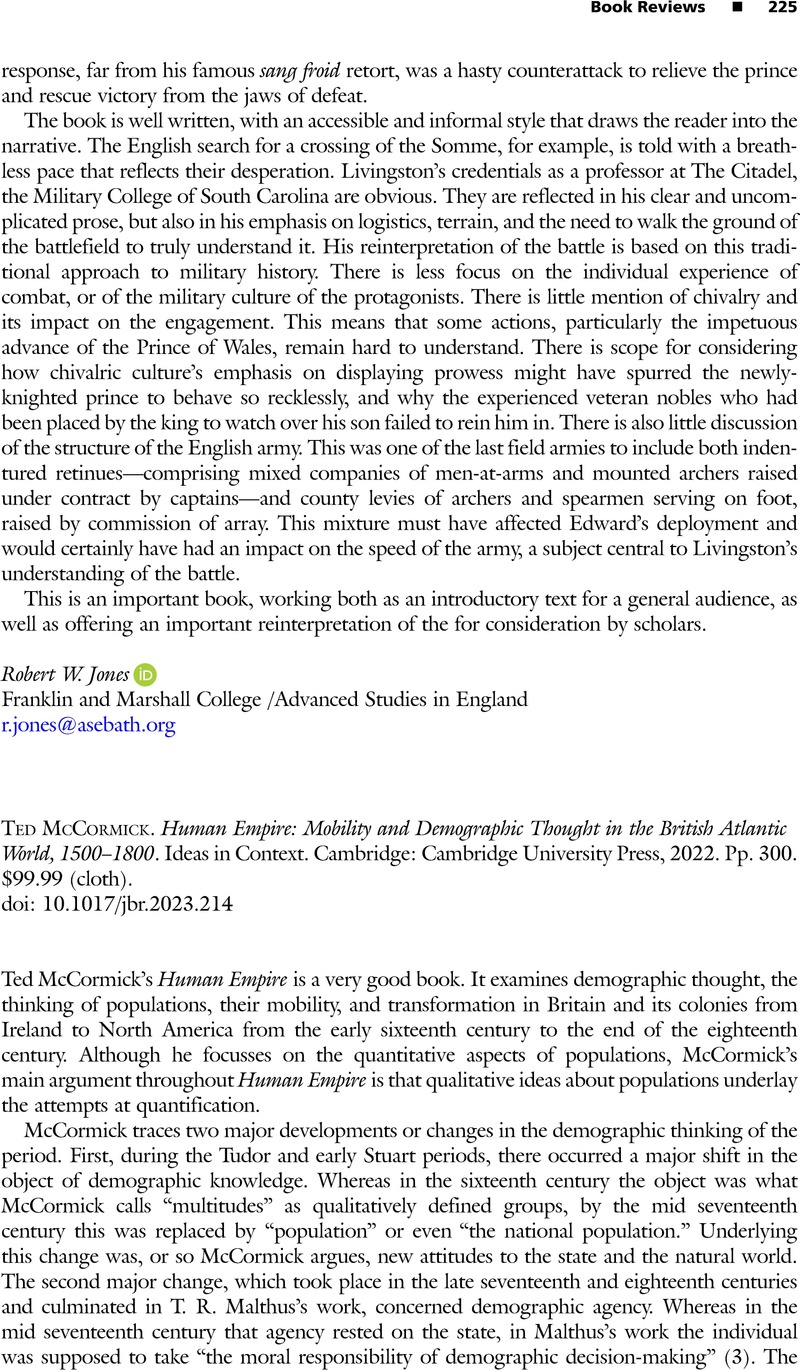No CrossRef data available.
Article contents
Ted McCormick. Human Empire: Mobility and Demographic Thought in the British Atlantic World, 1500–1800. Ideas in Context. Cambridge: Cambridge University Press, 2022. Pp. 300. $99.99 (cloth).
Review products
Ted McCormick. Human Empire: Mobility and Demographic Thought in the British Atlantic World, 1500–1800. Ideas in Context. Cambridge: Cambridge University Press, 2022. Pp. 300. $99.99 (cloth).
Published online by Cambridge University Press: 29 May 2024
Abstract
An abstract is not available for this content so a preview has been provided. Please use the Get access link above for information on how to access this content.

- Type
- Book Review
- Information
- Copyright
- Copyright © The Author(s), 2024. Published by Cambridge University Press on behalf of The North American Conference on British Studies



